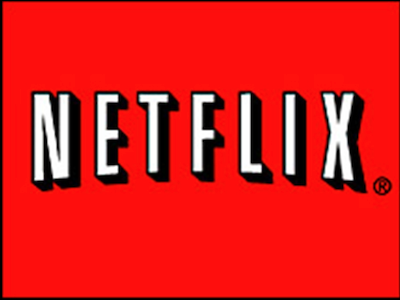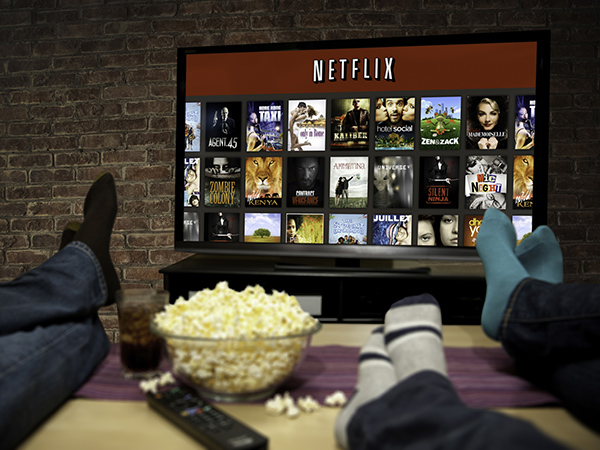Netflix Could Raise Fee to $15 and Keep Customers
It isn't a big deal that Netflix recently raised its monthly subscription cost from $7.99 to $8.99 — especially since current subscribers will be locked into the $7.99 fee for the next two years. But would you pay as high as $15 per month? That’s how much


It isn't a big deal that Netflix recently raised its monthly subscription cost from $7.99 to $8.99 — especially since current subscribers will be locked into the $7.99 fee for the next two years. But would you pay as high as $15 per month? That’s how much the leading online video provider could charge without a mass exodus, said two researches who survey customer attitudes. But Netflix's fee is unlikely to exceed $15, unless it drastically changes what it's offering and becomes a genuine cable replacement.
Tom's Guide spoke with Mark Kirstein, president of the entertainment group at research firm NPD Group, and Jonathan Hurd, director of the Altman Vilandrie & Company consulting firm, to learn how high Netflix could go.
MORE: 5 Cheaper Netflix Alternatives
"[Netflix] has the highest value for price rating of all digital rental and purchase options," Kirstein explained. Consumers are unusually enthusiastic about Netflix and its brethren, like Hulu Plus and Amazon Instant Video. (Amazon recently raised the price of its Prime video service by $20 to $99 per year.) About 78 percent of consumers rate their value at "very good" or "excellent" based on the price, compared with about 40 to 50 percent satisfaction for traditional physical media, such as DVD rentals and purchases.
This helps explain why, based on the general reaction of Internet users so far, Netflix customers are not too miffed about the $1 price increase. Even leaving aside their next two years at $7.99, viewers love Netflix and believe that it provides a lot of value for their money. That means that Netflix could, in theory, raise its prices more without prompting too much customer ire, but there are two important reasons why it wouldn’t.
"One is the absolute price consumers think is a good value," Kirstein said. Consumers have some baseline idea of what a streaming service should cost, and how much content it should provide. The second, he continued, is what viewers are used to paying. "Even if they think it's a great value for the price, they're going to resist price increases."
The Qwikster Lesson
Netflix already tried this, Kirstein explained, with its Qwikster debacle of September 2011. Netflix split its service into two formats: Netflix for online streaming, and Qwikster for DVD-by-mail rentals. Consumers resisted having to split their accounts and pay two fees instead of just one. Qwikster itself died a quick and ignominious death, but consumer ill will for separate streaming and DVD rental fees remained.
Sign up to get the BEST of Tom's Guide direct to your inbox.
Get instant access to breaking news, the hottest reviews, great deals and helpful tips.
Even so, Netflix has repaired its reputation since then; its 78 percent satisfaction rate today is up from an already-high 70 percent in 2012, Kirstein pointed out.
Customers are unusually happy with Netflix and are generally getting happier. That would allow Netflix to raise prices, but only so high. "They'd maximize their revenue somewhere in the range of $25 to $29 per month," Jonathan Hurd explained, although he said this would be a terrible idea on Netflix's part because it would cut subscribers by about half. "Netflix needs to grow its subscriber base in order to afford the investment they're making in original content and licensing content," he said.
MORE: Best Online Shows 2014
Hurd further explained that while Netflix could raise prices again, it's not likely to do so anytime in the near future. The $8.99 price point is essentially a risk-free way to evaluate how much people are willing to pay for the service, since existing subscribers are grandfathered into the $7.99 price.
Could Netflix replace cable?
Why people subscribe to Netflix also plays a role in determining how much they're willing to pay for it, said Kirstein. For most people, having Netflix is like having HBO: a pleasant extra, but not the backbone of their TV-watching experience. Once the monthly fee gets beyond $15, people would expect it to be a comprehensive basic cable replacement, complete with live TV and more original programming.
"The ultimate price point depends on how much value you can continue to add to the service to get recognized by the consumer as worth the money," Kirstein said. "[Netflix is] not, for the foreseeable future, going to pose a serious threat to [traditional] paid TV services."
"While Netflix is far and away the leader in terms of [streaming services], it's hard to say what the market landscape will look like in a few years," said Hurd. "In this market, two years is a long time."
Follow Marshall Honorof @marshallhonorofand on Google+. Follow us @tomsguide, on Facebook and on Google+.
Marshall Honorof is a senior editor for Tom's Guide, overseeing the site's coverage of gaming hardware and software. He comes from a science writing background, having studied paleomammalogy, biological anthropology, and the history of science and technology. After hours, you can find him practicing taekwondo or doing deep dives on classic sci-fi.
-
Zepid "Amazon recently raised the price of its Prime video service by $20 to $99 per year."Reply
Toppest of keks Tom's Guide, I don't think you are getting enough oxygen. Customers stomach that price hike for Amazon Prime not because of its sub-prime rental service, but for the free 2-day shipping to anywhere in the USA, and 1-day shipping for 3.99. Not to mention Saturday delivery for reasonable prices.
Thanks for the laughs Tom's, today is sure to be a good day. -
kawininjazx I think it would be cool if netflix would allow like 2 or 3 dvd mail rentals a month with the streaming service and just charge a flat $10.Reply -
antilycus I cut the netflix cord when they raised their prices from 9.99 a month to 14.99 a month ( for DVD + streaming ). NPD expects streaming customers to stay at 15 a month? Wow, way to lose ANY credibility in your researching skills.Reply -
icemunk No, that would be a horrible idea. Now on the other hand, Netflix COULD start offering a $15 "premium" content plan that has more content than the current one, that would be a better move. Simply trying to force people to keep paying more for the same service would be a bad strategic move. That is exactly what our cable providers did over many years, and slowly just priced themselves out of the market.Reply -
Alec Mowat $15 isn't a lot for cable, but when it's piggy backed on your internet bill, it can be a lot.Reply -
exnemesis So Netflix wants to charge $15/mth for a vast and deeply rich collection of B-Movies, scattered with some A-Movies that I've already seen. I think I'll cut. Can only watch Shark vs Mecha-Shark so many times.Reply -
game junky As much as I don't like the idea of shelling out more cash, I would do it if it meant more instant-view content. There are a large collection of shows that you can only get on disk, imagine a world where Justified was an instant-view...Reply -
spdragoo Before everyone starts blowing their top, just remember: This isn't Netflix saying they plan on increasing the monthly bill to $15. It's just 2 people -- 1 from a market research company, the other from a consulting firm -- that claim that Netflix's existing customers would be willing to pay up to that much. In other words, it's less based in fact than your standard "water cooler" office gossip.Reply
Netflix already sent me my email stating that I'm locked into my current $7.99/month for the next 2 years, so I won't worry about it until then. -
bak0n They've got rid of the majority of their updates. I'm on the verge of cancelling now just because of that. If I want TV shows I'll go to hulu for free!Reply

